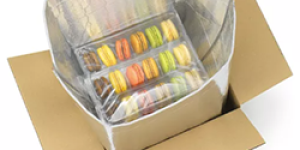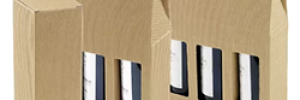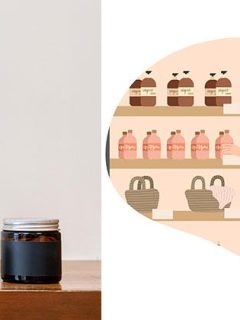The transport performance of freight transport in Germany in 2019 was just over 490 billion tonne-kilometres. The largest share in absolute terms is accounted for by road freight transport, with 312 billion tonne-kilometres, almost three times as much freight as was transported by rail. These figures make it clear how important it is to secure loads properly.
A very important prerequisite for properly secured loads, for example in lorries, is properly loaded pallets. If an improperly secured load unit on the loading area starts to move, or if the load on a pallet tips or slips, this has an impact on the stability and safety of the entire transport. So, in a separate article, we will first address the topic of Pallet securing as a contribution to load securing.
Homogeneous load on a pallet
The simpler case: You have goods that all have the same dimensions and ideally even matched to the dimensions of a Euro pallet (classic: 1200 x 800 mm). In this case we speak of homogeneous load, it is easy to create this image:
Heterogeneous load of a pallet
In general cargo transport, however, the not quite so “perfect” load unit also occurs:
Here, packaged goods of different shapes were loaded on one pallet. In order to achieve the best possible stability, however, a few basic rules should be observed.
Staggered construction for better load securing
As with building a stable Lego tower, prevent columnar stacking. Make sure to load in a staggered manner. In the “staggered construction”, the load unit is better able to withstand forces such as a full truck braking. This effect is also considerably increased by the use of anti-slip mats.
Professional stretching for better load securing
Another important factor in ensuring that the pallet has a stable hold, and thus an important factor in improving load securing, is proper stretching. Regardless of whether stretching is done manually or mechanically, the following procedure must be observed, whereby (semi-) automatic pallet wrappers have “learned” this programme after appropriate programming:
- Unwind the film by approx. 1 metre and tie it to the pallet foot (not necessary with mechanical stretching).
- Wrap the pallet foot between 5 and up to 12 times (foot wrapping), depending on the weight of the load, to firmly connect the pallet and the packaged goods.
- Then – with overlap (60% is recommended) – continue to wrap upwards in a spiral.
- Wrap the pallet head about 3 times (head wraps) and spiral down again.
- Tear off the stretch film just before the last wrapping side and re-wrap by hand.
Choosing the right stretch film
Depending on the type of pallet load (type A, B or C), there are more suitable and less suitable types of film. In general, however, an additional strapping band ensures significantly more stability. The table shows when which type of film is recommended. Cast film and blown film already differ in the manufacturing process. We have summarised the differences between the two manufacturing methods in a pdf. You can see whether a product is cast or blown film in the product text in our webshop and in the catalogue.
| Type of film | Thickness | Palletised goods | Palletised goods Type |
| Cast film | less than 17 µ | less than 600 kg | A |
| Cast film | 17 to 20 µ | 600 – 800 kg | A, B |
| Cast film | 20 to 25 µ | more than 800 kg | A, B, C |
| Blown film | less than 17 µ | less than 600 kg | A |
| Blown film | 17 to 20 µ | 600 – 800 kg | A, B |
| Blown film | 20 to 25 µ | more than 800 kg | A, B, C |


















